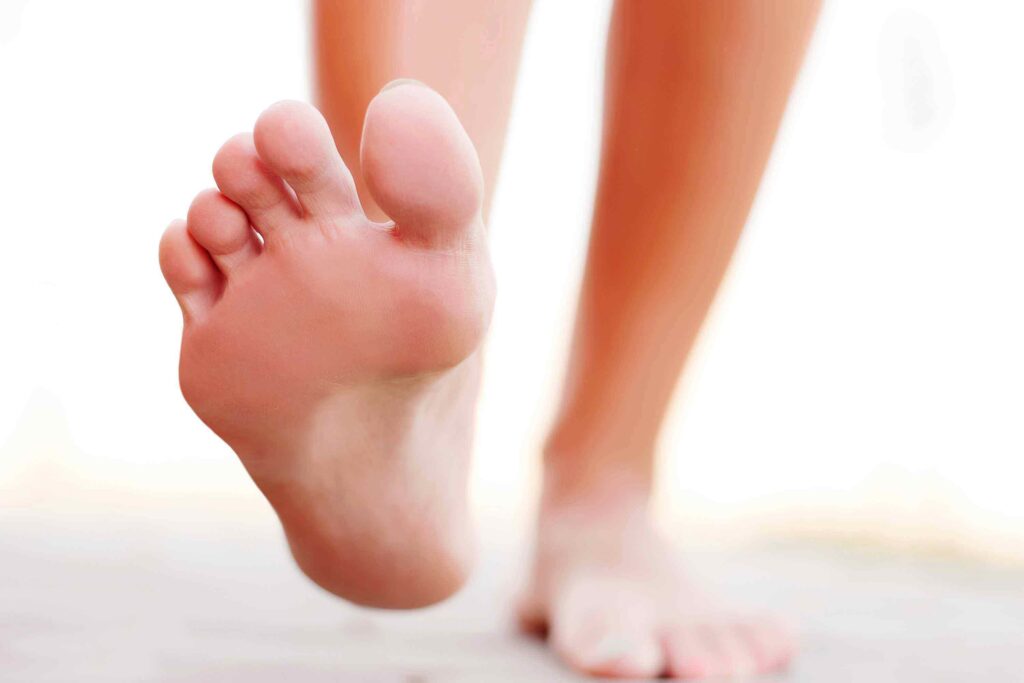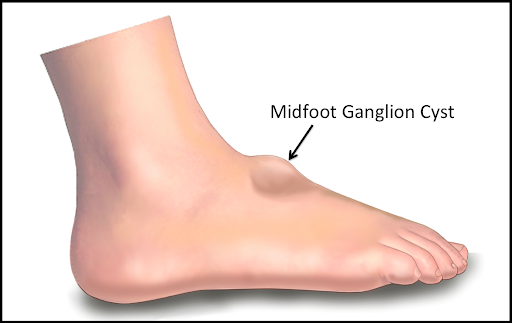How to Treat a Ganglion Cyst on Your Foot or Ankle

A ganglion cyst is a common medical condition with more than 200,000 cases reported each year among Americans. While ganglion cysts are more commonly located on the wrists of an individual, a study conducted in 2017 found that 11% of ganglion cysts are found on the foot or ankle.
What is a ganglion cyst?
The word ganglion is a Greek word meaning “knot”. A ganglion cyst is a fluid-filled lump that is formed near a joint or tendon ranging in size from as small as a pea to as large as a golf ball. Ganglion cysts most commonly affect those aged 15 to 40 and are 3x more likely to affect females than males.
What causes ganglion cysts on the foot or ankle?
There is no definitive answer as to what causes ankle or foot ganglion cysts, however, doctors believe these cysts to be the result of trauma to the affected area.
Symptoms include:
- A free moving lump on the wrist, foot, or ankle
- Tingling or burning in the area indicating that the lump is pressing against a nerve
- Dull pain in the affected area due to the cysts pressing on a tendon or joint

How to treat a ganglion cyst on the foot or ankle
Ganglion cysts located on the foot or ankle can be treated one of two ways: non-surgical and surgical.
Non-surgical ganglion cyst foot treatment options include:
- Monitoring by a health provider: With a painless ganglion cyst that does not interfere with the daily life of the patient, doctors will closely monitor the patient for any changes.
- Shoe modifications: Doctors recommend wearing shoes that do not put pressure on the cyst.
- Aspiration and injection: This non-surgical procedure involves a physician inserting a needle into the cyst to drain the synovial fluid, then injecting a steroid medication directly into the cyst.
A ganglion cyst is not something to be alarmed about if it is not causing pain or discomfort as it will likely go away on its own within a few months.
Ganglion cyst removal surgery
A persistent, painful, or chronic ganglion cyst often requires surgical removal. Surgical providers often attempt non-surgical treatment options before jumping straight to surgery; however, this is not always the case.
Surgery is recommended when non-surgical treatments have failed or have been deemed inappropriate. Also, if the ganglion cyst has persisted for several months, or if it is causing discomfort or pain, surgery might be recommended. It’s important to note that the recurrence rate is lower with surgical intervention than non-surgical treatment options.
How long is recovery from ganglion cyst surgery on the foot or ankle?
Ganglion cyst surgery recovery time differs from person to person but can take anywhere from 2 to 8 weeks for a full recovery. While you may begin to feel better within the first few days, it’s important to take it easy for the entire recovery time.
At Red Mountain Footcare in Mesa, AZ, we recommend being seen as soon as you notice an unexplained lump on your body, whether it be your wrist, foot, ankle, or elsewhere, in order to receive proper diagnosis and treatment.
